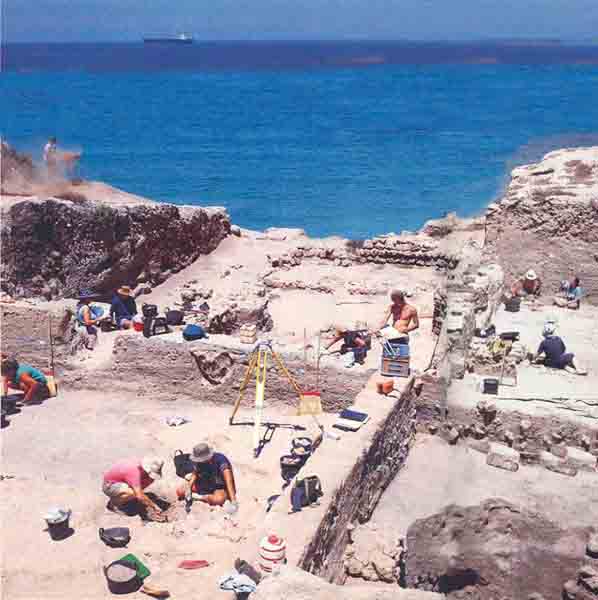Image Details

Carl Andrews
A modern-day tanker (upper left) plies the calm waters of the Mediterranean as excavators in the foreground navigate towards the past. Their site along Ashkelon’s coast was home during the late-sixth and fifth centuries B.C., first, to an approximately 30-by 60-foot port warehouse and then, for about 50 years, to a huge dog cemetery (see photograph of a typical dog burial). In all, excavators have uncovered at least six phases, totaling 10 feet in thickness, of Persian-period (538–332 B.C.) occupational debris in Ashkelon atop the earlier Philistine (12th–7th centuries B.C.) phase of occupation.
Starting about 500 B.C., the Mediterranean coast enjoyed a burst of prosperity under Persian-appointed Phoenician rulers. Author Lawrence E. Stager, who heads the excavations at Ashkelon and who in our last issue described the earlier history of the city under the Canaanites and the Philistines, here moves the story forward into the Persian period, a time when Ashkelon was a city of cultural diversity, teeming with Phoenicians, Greeks, Persians and Egyptians. He also unveils a challenging new hypothesis on why so many dogs were buried on prime seaside real estate.
